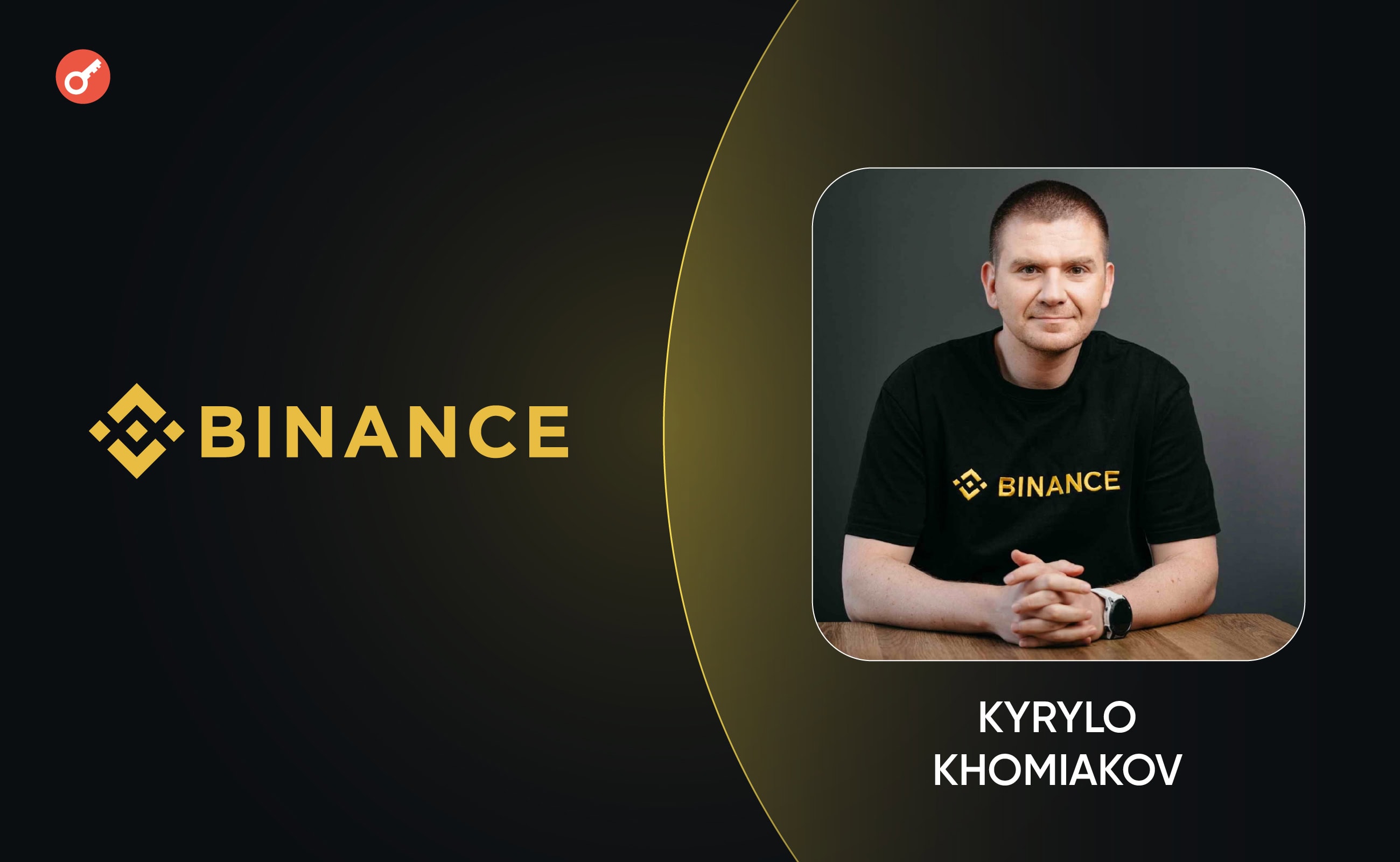On Crypto Regulation in Ukraine, Binance’s Exit from Russia, and Meme Coins: An Interview with Kyrylo Khomiakov

How do different regions of the world vary in terms of cryptocurrency development? What does Binance think about regulating the Bitcoin market in Ukraine? What is happening with the platform’s exit from the Russian market, and do meme coins and GameFi have a future?
We discussed all this with Kyrylo Khomiakov, Binance’s regional head for Central and Eastern Europe, Central Asia, and Africa.
On Regional Differences
Your position as the regional head of Binance for Central and Eastern Europe, Central Asia, and Africa covers quite a large geographic area, with very different local markets. How does Binance’s development strategy differ across these diverse regions, and what trends and narratives stand out in each?
Essentially, these are three major regions — the countries of the former CIS, Eastern Europe, and Africa.
For the European zone, the MiCA regulation on stablecoins is already in effect. Starting January 1, it will also cover all other altcoins, establishing a single regulatory framework there.
In the CIS countries, approaches vary widely. The most advanced are Kazakhstan and Georgia, where comprehensive regulations are already in place. I hope Ukraine will join this group next year, becoming a country where cryptocurrencies are regulated and not seen as something illegal.
Africa is a rapidly developing continent. Six out of the ten fastest-growing countries in the world are in Africa. However, the development of the crypto industry there is still quite nascent — it’s like where we were about ten years ago. That’s why I am working on this region; what we have already experienced is just beginning there, making our experience highly relevant for Africa.
As I understand it, regulation is one of the main factors for growth in any given country. But what about the strategy for developing a crypto exchange — does it differ from region to region?
There is certainly regional specificity. For example, in Ukraine and generally in CIS countries, futures, derivatives, and a slight element of gambling are very popular. In Europe, the market is more stable, and high-quality on-ramp and off-ramp solutions are very important.
In terms of our strategy, we aim to invest heavily in education and to understand these nuances and specific needs from country to country.
By the way, Binance previously announced plans to reach 10 million users in Ukraine.
We consider the number of people who actually make purchases online. In Ukraine, that’s around 10 million. This is the largest cohort of potential customers who could adopt cryptocurrencies.
Web3 applications are still complex and not always user-friendly. So, users need to be fairly advanced, frequently engaging with the internet, knowing how to protect their data, and able to use sophisticated services.
As an industry, we are still in an early development stage, even globally. Currently, there are 54.5 million active on-chain addresses, while more than 5 billion people use the internet. This means that only about 1% of internet users are interacting with cryptocurrency. This is where the growth potential lies — not for everyone, but for those who are already closest to adoption.
Cryptocurrencies are often presented as a means to enhance financial inclusion in countries with underdeveloped banking systems. Do you see real examples of how crypto assets have improved people’s lives?
Certainly, countries with a lack of trust in their national economies and currencies have the highest rates of cryptocurrency adoption. Examples include Ukraine, Turkey, Malaysia, Brazil, and Nigeria.
People are trying to preserve their assets and protect them from rapid inflation, which quickly erodes savings. We’ve seen this, for example, in Turkey, as well as in Nigeria, Brazil, and here [in Ukraine].
However, our case is unique. Cryptocurrency has proven to be not only a means of savings preservation but also a tool for assistance. This represents a completely new use case for crypto.
About Ukraine
In the Chainalysis rankings, Ukraine placed sixth in cryptocurrency adoption. Do you believe that cryptocurrencies can serve as an alternative to traditional financial systems for Ukrainians amid economic instability and National Bank of Ukraine (NBU) restrictions? Does this require legislation, or are these parallel processes?
Regulation is necessary to establish clear rules for all market participants so that everyone understands how to operate.
Any regulation is less ideal than none at all, but if it is balanced and well-designed, considering not only the regulators’ demands or wartime norms but also focusing on the community and users, then, long-term, it will give Ukraine a strong advantage over other countries. This approach can attract capital, create jobs, and generate tax revenue.
What share of Binance’s global operations do Ukrainian users represent?
We can’t share exact figures, but I can say that Ukraine is among the top 10 global markets in terms of user numbers.
Is the number of Ukrainian users growing, or are you seeing a shift toward decentralized solutions?
The number of users was steadily growing even before the war, but after the full-scale invasion, it began to increase even more rapidly. This terrible situation has accelerated crypto adoption as new use cases have emerged that wouldn’t have without the war.
Regarding NBU restrictions we discussed earlier: direct bank card operations for crypto exchange users have been blocked in Ukraine for quite some time, allegedly due to efforts against illegal gambling. Are there any updates on this issue? Is there any possibility that these restrictions will be lifted? And as an exchange, is Binance working with regulators on this?
On the one hand, this market is unregulated, so the NBU cannot allow Ukrainian banks to handle such payments directly, viewing them as high-risk.
While the National Bank claims it cannot dictate what commercial banks do — each conducts its own risk analysis — the current stance of the regulator discourages Ukrainian banks from taking this risk, as they fear potential sanctions.
On the other hand, this situation benefits no one. Yes, there were issues with gambling and betting, and I understand the reasons behind a full shutdown, but the crypto market was also cut off as a result.
Has crypto disappeared? No. Have hryvnia and crypto transactions stopped? Also, no. P2P platforms exist, and although the NBU’s restrictions have increased pressure on them, they haven’t disappeared. It’s just become more complicated, and users pay more. Is anyone benefiting from this? No. There’s no transparency, increased user risk, high fees, and not a single hryvnia from these transactions reaches the state in tax revenue.
We proposed a solution: let’s take a state bank, for example, and run a test integration. This would ensure transparency, tax payments, and proper KYC processes. But we await regulation and hope that, together with the regulators, we can move this issue forward.
About regulation
Currently, two versions of regulation and taxation are being discussed — one from the National Securities and Stock Market Commission and one from the Ministry of Digital Transformation. From a business perspective, which draft law seems more attractive and stimulating for the market in Ukraine?
We support any version that can finally satisfy everyone. But as long as the Ministry of Digital Transformation and the Commission are debating over which draft is better, regulation remains at a standstill. So we agree to any option that will not be blocked by other state agencies.
Ideally, we want the National Bank, the Commission, the Ministry of Digital Transformation, financial monitoring bodies, and parliament — everyone involved — to choose a single regulatory framework. We have working groups for collaboration with both the Ministry of Digital Transformation and the Commission, and even at the parliamentary level.
In the version of the draft law presented by the NSSMC, there is a provision regarding tax agents. Lawyers note that under this provision, exchanges would act as agents for their clients and withhold taxes. What is your view on this provision? How should it be implemented? Will Binance implement similar systems if this provision remains in the adopted document?
I’m not very optimistic about this specific point. To me, it seems like a non-starter. This provision should be removed because it would be very difficult to implement in practice.
If it remains, many exchanges will never obtain a license in Ukraine, including smaller exchanges, decentralized platforms, and wallets. There should be a uniform regulatory framework to ensure fair competition among all players. Therefore, the implementation of this provision is unlikely to be feasible.
The NSSMC constantly emphasizes the need for complete synchronization of Ukrainian regulation with MiCA. The Ministry of Digital Transformation argues that implementing all the European regulations right now does not stimulate the market in Ukraine, and may even have the opposite effect. What approach do you think is more suitable for Ukrainian realities — a gradual one or implementing everything at once?
In reality, we cannot choose regulations from each individual European country — all EU requirements must be met and fully integrated into local legislation. I understand both sides.
The Ministry of Digital Transformation’s position is understandable, as we lack resources like oil or gas, and we aim to be competitive by offering other advantages. This is a sound strategy.
On the other hand, the National Commission recognizes that there is a memorandum with the IMF and its recommendations, which state that for Ukraine, as a potential EU member, legislation must be fully aligned with EU standards to avoid constant revisions in a year or two. The Commission cannot simply ignore this.
By the way, the Commission is working very effectively with the business community — there has been a working group for some time that has become even more active following the IMF’s recommendations, holding meetings and workshops.
Regarding MiCA: this year, provisions concerning stablecoins have already come into effect. Binance has previously warned that it would restrict so-called unregulated stablecoins. Will this apply to the most popular asset in this segment — USDT?
The restrictions took effect on June 1 for all European countries. Currently, they mean that we can only discuss licensed stablecoins with users.
However, this does not mean that USDT will disappear from Binance. We do not plan to delist it or any other unlicensed stablecoins. We do not promote them, nor do we distribute any rewards related to them. We have no plans to change anything starting January 1.
On leaving Russia
This is a question that interests many. What is happening with Binance’s final exit from Russia? The exchange sold the business to CommEX a year ago, but later it turned out that the latter had not fulfilled its obligations. Binance stated that its decision to exit remained unchanged and that the platform was negotiating the sale of the business. However, it was recently revealed that Binance is still servicing some Russian clients. So, is Binance still operating in Russia?
When we announced this, we completely shut down our business in Russia. This means we closed registration for new users, halted all trading pairs with the ruble, shut down all fiat channels, and stopped P2P platforms. Nothing has changed in this regard.
We began the gradual transfer of clients to CommEX. However, after CommEX failed to fulfill its commercial obligations to us and went bankrupt, we partially halted the process of transferring existing clients to that exchange.
Since then, nothing has changed. We continue to serve only a small portion of those old clients. Our strategy for exiting the Russian market has not changed; it simply takes more time than we initially expected.
About meme coins and Satoshi
Let’s move on to some general crypto topics. Can you highlight the main narratives and trends in the market right now?
I’ll share an unpopular perspective. Everyone hopes to hear about a bull run, “to the moon,” Bitcoin at $1 million, and so on. But I believe that today we lack good use cases for cryptocurrency. Since the launch of Ethereum, there haven’t been many products that enable users to gain benefits from the daily use of cryptocurrencies.
The only use cases right now are ETFs and stablecoins for payments. There aren’t many other cases. What have we seen emerge during this time? We’ve gotten meme coins and gimmicks. And this isn’t good for the industry because it’s turning into a big casino.
These types of projects really don’t provide any real benefit, apart from the expectation of receiving rewards or airdrops. Consequently, user behavior isn’t organic; they gain something and then completely leave that product.
What is needed for mass adoption? Products that make Web3 applications useful for daily use.
But meme coins are our reality now. Why do you think there’s such a “frenzy” around them, and how long do you think it can last?
It’s primarily a pump-and-dump phenomenon for the most part. However, there is a trend and demand from users for these coins.
Of course, we’re trying to provide products that are useful and in demand among our users. So, we are actively looking to list not just large projects but also medium and small assets.
For these products, we will apply three main criteria: a working business model, an adequate community, and a strong development team.
Let’s return a bit to regulation. Many note that the uncertainty in regulation or its strictness, often seen in Western countries, pushes crypto companies to seek more lenient jurisdictions in Asia or, for example, the UAE. In your opinion, where is the future of the industry — in the US and Europe or more in Asia?
Indeed, Dubai is developing rapidly as a global crypto hub.
I can only speak about the regions I’m involved with. Kazakhstan is progressing well, and Georgia has quite reasonable conditions, with regulators trying to build a partnership with the business.
In Europe, it’s a bit more complicated because the regulation is more market-oriented, and consequently, the requirements are much higher. Interestingly, European countries are currently competing with each other to be more crypto-friendly to attract as many market players as possible who will pay taxes.
What do you think about GameFi? Could gaming projects become a new trend in 2025?
Yes, they have potential. All these “tap” projects operate on a model similar to Uber: they initially attract a large number of users and then try to convert them into profits generated from those users.
I believe this trend will continue. More and more products will emerge within the TON ecosystem based on Telegram that will operate in a gaming format. However, this won’t be the same GameFi we saw a few years ago.
It will happen in Telegram, with the main idea being attention economy. In other words, people will be paid for the time they spend in a specific place, and over time, they will be able to convert this into rewards.
In conclusion, what would you say to Satoshi Nakamoto during a private meeting?
Well, I am Satoshi, and you are Satoshi, and we all are Satoshi.
I would express my profound gratitude for creating such a mechanism that has the potential to level the playing field of poverty worldwide. I truly believe it will allow all segments of the population to gain access to capital and equal opportunities.



